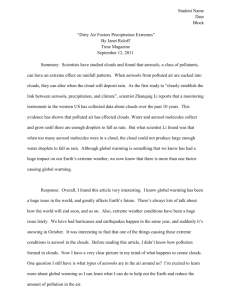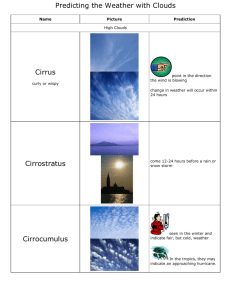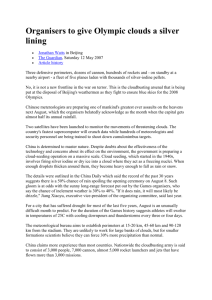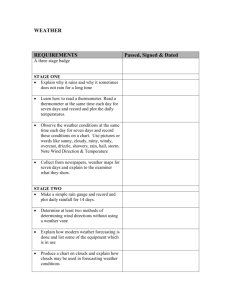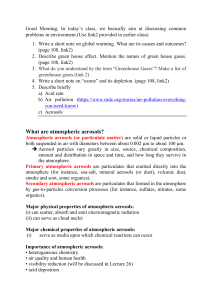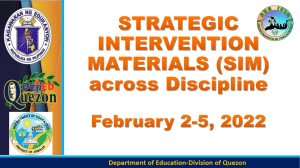The Water Cycle and Changes of Form
advertisement
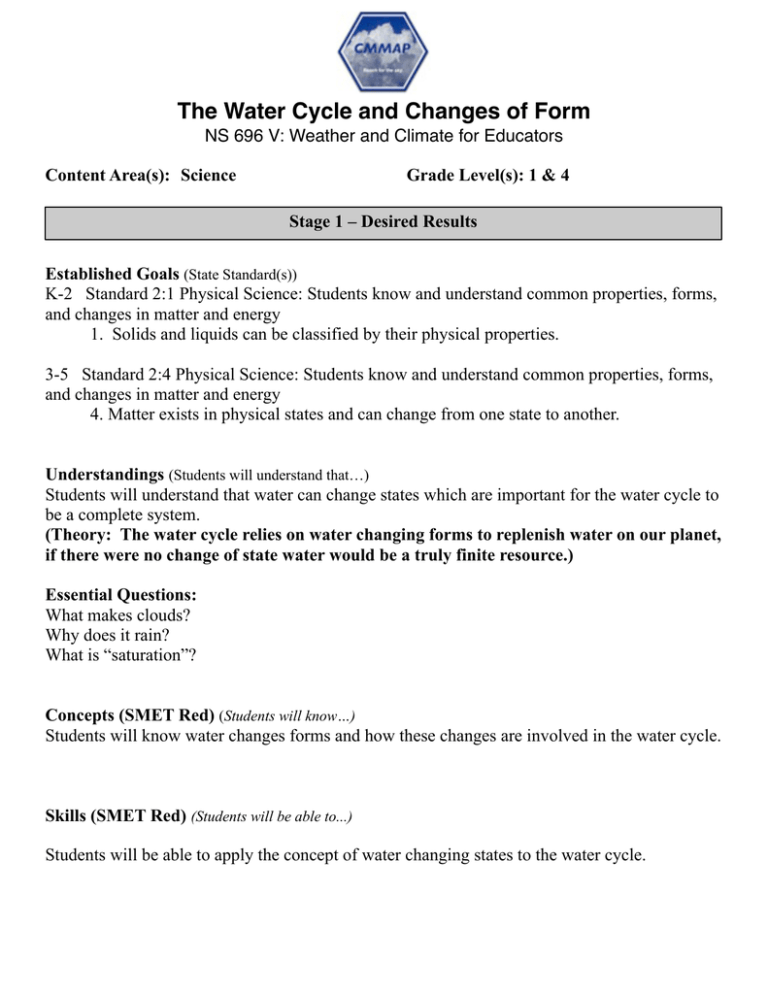
The Water Cycle and Changes of Form NS 696 V: Weather and Climate for Educators Content Area(s): Science Grade Level(s): 1 & 4 Stage 1 – Desired Results Established Goals (State Standard(s)) K-2 Standard 2:1 Physical Science: Students know and understand common properties, forms, and changes in matter and energy 1. Solids and liquids can be classified by their physical properties. 3-5 Standard 2:4 Physical Science: Students know and understand common properties, forms, and changes in matter and energy 4. Matter exists in physical states and can change from one state to another. Understandings (Students will understand that…) Students will understand that water can change states which are important for the water cycle to be a complete system. (Theory: The water cycle relies on water changing forms to replenish water on our planet, if there were no change of state water would be a truly finite resource.) Essential Questions: What makes clouds? Why does it rain? What is “saturation”? Concepts (SMET Red) (Students will know…) Students will know water changes forms and how these changes are involved in the water cycle. Skills (SMET Red) (Students will be able to...) Students will be able to apply the concept of water changing states to the water cycle. Stage 2 – Assessment Evidence Performance Tasks: Engage: Convection – create clouds in aquarium activity (LSOP) Explore: Simulate the water cycle demonstrating each phase. Explain: Draw the water cycle or different phases of water. Extend: Raindrop simulators (LSOP) Other Evidence (Formative, Summative, tests, quizzes, prompts, work samples, observations, etc.) Collect work samples and observe activities. (Explain) • Water cycle booklet • Cloud and rain activity Student Self-Assessment and Reflection: Evaluate: Journal about the activity and what they learned including vocabulary and concept ideas. Stage 3 – Learning Plan Learning Activities: Water turning to vapor: 1. Observe foggers in an aquarium. Saturation point and rain: 1. Students model the water cycle from beginning to end. a. First graders will represent water in various forms and move through the cycle. b. Fourth graders will represent the earth’s surface (ground, lake, etc.), sun and aerosols (dust, pollutants, etc.) 2. Materials: a. Cellulose sponges b. Water droppers c. Water pans d. Glitter (aerosols) e. Visuals (ground, lake, sun, river, etc.) Technology Integration: Promethean white board activities and flip charts. National Geographic water cycle materials. United Streaming videos Brain Pop clip School to Career: Meteorology/Atmospheric Sciences Physics (engineering) Hydrology (engineering) Lesson Generated By Mary Gardner and Deb Munson
